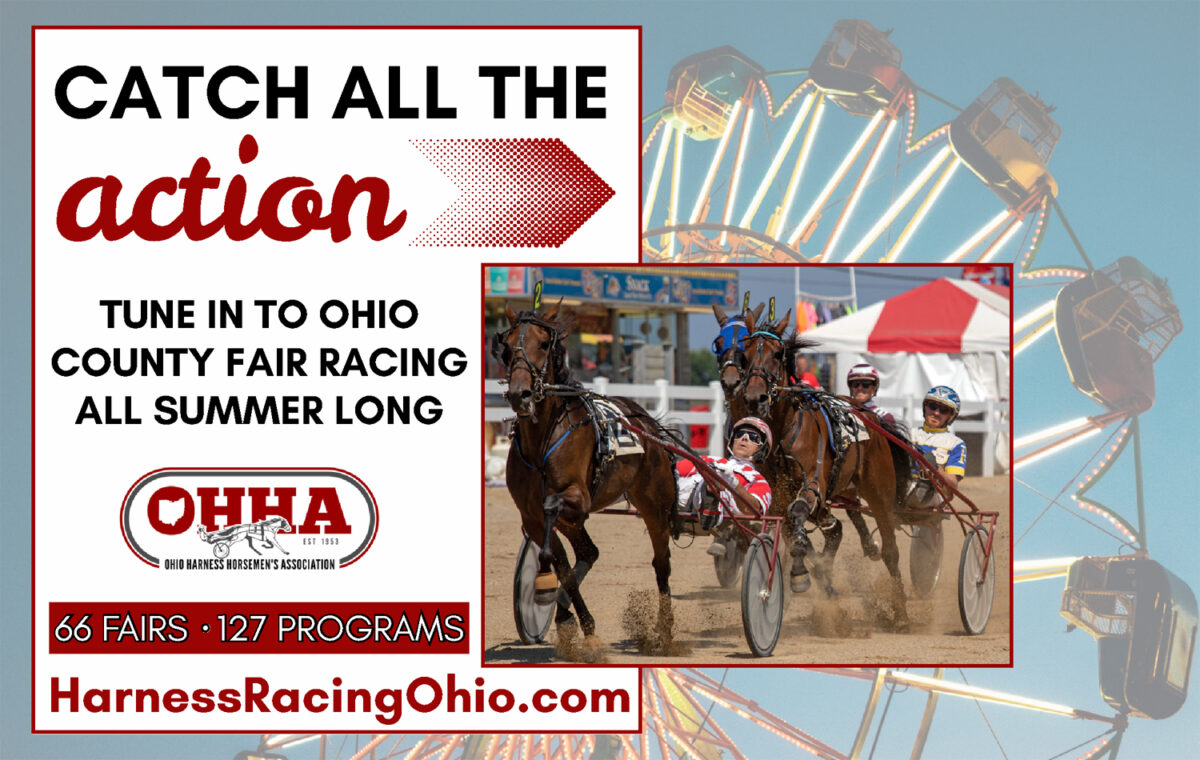Stopping a trotter from pacing behind the gate, picking out a good bottle of red in Lexington and more…
by Ron Gurfein
Thank you to all my Facebook friends for the overwhelming response to the idea of this column. Please feel free to make comments in the feedback section of Harness Racing Update (HRU) by sending an email to editor@harnessracingupdate.com.
Interesting development: the first question came from my first client, Esther Balenzano, a lovely lady that has been racing horses since the 1960s. She is also the proud owner and breeder of Meladys Monet the great Revenue S gelding that has amassed almost $1,200,000 in his career.
Her question is: How do you stop a trotter from pacing behind the gate?
Oddly enough, I owned and trained a world champion trotting mare Franconia that paced to the gate every start. Thank God she would switch to the trot as the gate accelerated. A few of my friends chimed in: add weight. They may be right 10 per cent of the time, but that should be a last resort because weight kills. It causes lameness and definitely increases interference. If the horse is sound and trains well without trying to pace, I would say your problem is just a case of nerves. Many horses on the high-strung side have difficulty with the start. You have to get the horse to be relaxed behind the gate, open the bridle, drop his or her head a few holes and put a ring martingale on to keep the bit down in the mouth. Put him behind the gate like that every day. I would also take any grab off his front shoes and have your veterinarian check on his knees and feet. This could take a little time and effort but you will certainly fix it.
The second question comes from Mike Vandeheede who asked: How do you find a good bottle of red wine in Lexington?
Believe it or not, if you are really fussy it’s not so easy. In order for a restaurant to have a great wine list they have to have been in business a long time and have vintage wines from years ago that they paid little for. There are not many restaurants in Lexington with that kind of longevity. The only list I can truly recommend is Debbie Long’s famous old eatery Dudley’s on Short. Not only a great wine list, but reasonably priced. You can see the entire list on Open Table.com. Another very good wine list and also great dining is the Holly Hill Inn in Midway maybe 15 minutes from downtown.
The third question was more of a discussion between Mike Vandeheede and me. I thought the readers would like the topic, which was: How did I hit the pick 3 and the pick 4 on opening day at Keeneland?
Anyone who knows me knows I am not a gambler or a handicapper. I leave that job to my talented friend Gordon Waterstone. I consider myself more of an investor. The difference being handicappers try to figure out every race winner and make gimmick wagers within each individual race. I believe the only way you can win at the track is by betting multiple race picks, i.e. pick 3 4 5 etc. My reasoning is simple. Inferior horses can fall into a trifecta by not being used and others tiring. To me it is easier to find consecutive winners than predict the order of finish of a particular race. The other key is betting the cheaper races where the jockey or driver becomes more important. Form is far less important when all the horses are bad and you have a Yannick Gingras first time or a Julien Leparoux. Pay no attention to past performance or the morning line, just go through the program and cross out all the drivers that basically never win. When you find three races in a row where you have eliminated most of the horses you can formulate a reasonably-priced pick 3. You would be surprised how often Gingras or Sears have $50 horses.
Nick Salvi writes: You have had a lot of very good two-year-olds. Is there any special shoeing technique you would recommend?
This is a great question and one that I am asked all the time. I think the simplest way is the best way. When a colt comes from the sale to your barn the first thing you do is pull all his shoes off. Not that I have anything against the farm blacksmiths. Some of the greatest blacksmiths of all time do farm work. My problem is they are too good and many of the yearlings have been somewhat adjusted so they appear more correct than they actually are. If you pull their shoes and break them barefoot till they are jogging three miles a day you will have their feet worn to where they are natural and that will be a lot easier on their joints. At this point, I would put front shoes on. Start with a 3/8th inch flat steel shoe reversed with no pad. The reversed shoe will be easier on their knees and be less likely to cause interference. Any time after that you can put the same shoe on behind, but please not backward. The reason I don’t like to shoe them in front and behind on the same day is that it’s too long in the shop for a baby and you want the experience to be a good one.
Now, I have left the door open for more questions.
Have a question for The Guru? Email him directly at: gurftrot@aol.com or send your question via HRU to: qotw@thehru.com and put Ask the Guru in the subject line.

















